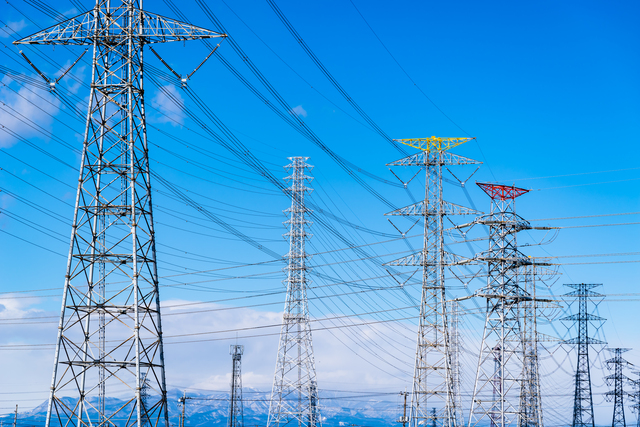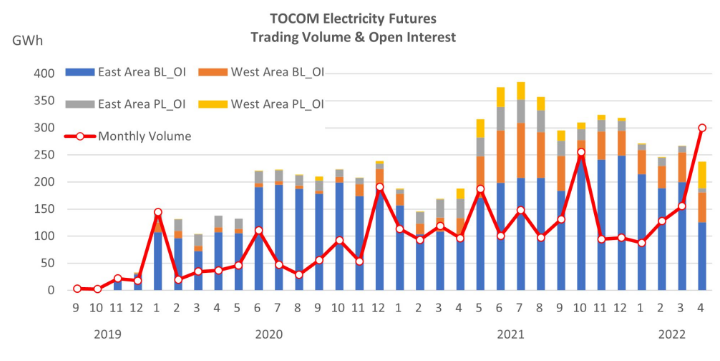TOCOM Energy
JPX Energy Market Updates(Aug. 1, 2022)
Crude oil futures were higher last Friday as tight supply outlooks overshadowed economic uncertainty and recession fears. Nonetheless, a late selloff saw price retreat by more than $3/b from earlier highs, and oil prices remain trapped in a well-worn range since early July, as investors continued to weigh signs of macroeconomic weakness against a tight physical market.
Dubai cash stormed higher on the final trading day of September partials, comfortably outpacing Brent gains. Dubai cash for September delivery was assessed around 107$/b for 29 July at Asian market close, up 2$/b from the previous session, while the new front-month Oct22 JPX Dubai future contract was down with the paper market and is viewed as a more realistic guide to future market dynamics.
While flat prices settle higher, intermonth spreads of these crude oil futures retreat from last week's close. On a monthly basis however, the key M1/M3 Dubai cash spread, closely monitored by Middle East National Oil Companies, averaged at $9.19/b in July compared to $7.54/b in June, paving the way for yet another hike in Official Selling Prices for September-loading barrels.
The US Federal Reserve's battle to calm inflation with another 75 BP rate hike and downbeat news on the state of the broader US economy dampened sentiment in the second half of last week, but the focus has also flipped back to supply and demand fundamentals ahead of the OPEC+ meeting.
On the supply side, informal Reuters poll of delegates suggesting the group is planning at the most only a modest hike in September output. According to the poll, two of the OPEC+ sources said that a modest increase for September would be discussed. Five indicated that the group would likely keep September production targets in line with August.
OPEC's Joint Technical Committee will meet on Tuesday, with the Joint Ministerial Monitoring Committee meeting scheduled for Wednesday. The decision will reveal how the OPEC+ alliance, in particular Saudi Arabia and the UAE, has assessed the market's outlook.
The meeting marks a new chapter for the alliance, with the existing deal expiring at the end of August. Even though only Saudi Arabia and the UAE are believed to have immediate spare capacity, OPEC+ is expected to continue its regular dialogue.
At its previous meeting in late June, OPEC+ ratified previously announced plans to increase output quotas by a combined 648,000 bpd in August, which brings nameplate OPEC+ output close to levels before the record 9.7 million bpd cut in 2020. However, according to the group's own figures, output came in 2.84 million bpd below its collective June production target, with compliance at a record 320%.
In particular, Saudi Arabia was said to be close to its operational output limit with regard to a long-term sustainable level, reducing the kingdom's flexibility to commit to further long-term output hikes.
In the US, the US Department of Energy announced its fifth sale which include up to 2.8 million barrels of sour crude and 17.2 million barrels of sweet crude between Sept. 16 and Oct. 21 as part of the largest-ever Strategic Petroleum Reserve drawdown aimed at reining in gasoline prices and also shared details of its plan to replenish the SPR.
According to a new analysis from the Treasury Department, the SPR releases, along with an additional 60 million barrels released by international allies and partners, curbed prices at the pump by as much as 42 cents/gal, compared with where they may have soared absent the releases.
On the demand side, the US economy contracted by an annual rate of 0.9% between April and June, against expectations of a modest 0.5% gain, This marked two consecutive negative quarters of US growth.
However, last week's US energy data supported wider sentiment, with US consumption largely seen holding up and record export levels highlighting global demand. Among the oil product, daily US gasoline deliveries jumped by over 1.2 million bpd in the fortnight to July 22, pushing demand back up to less than 1% to year-ago levels and wiping off its post-Independence Day hangover.
In the Asian market, while gas and thermal coal remain the main feedstocks for power generation, Asia-Pacific medium to heavy sweet crude oil grades have piqued the buying interest of Japanese power utilities during the peak summer demand season as coal and LNG prices so strong boosting regional crude demand in the process. This is in line with previous expectations of oil and gas switching because high prices of competitive alternatives.






